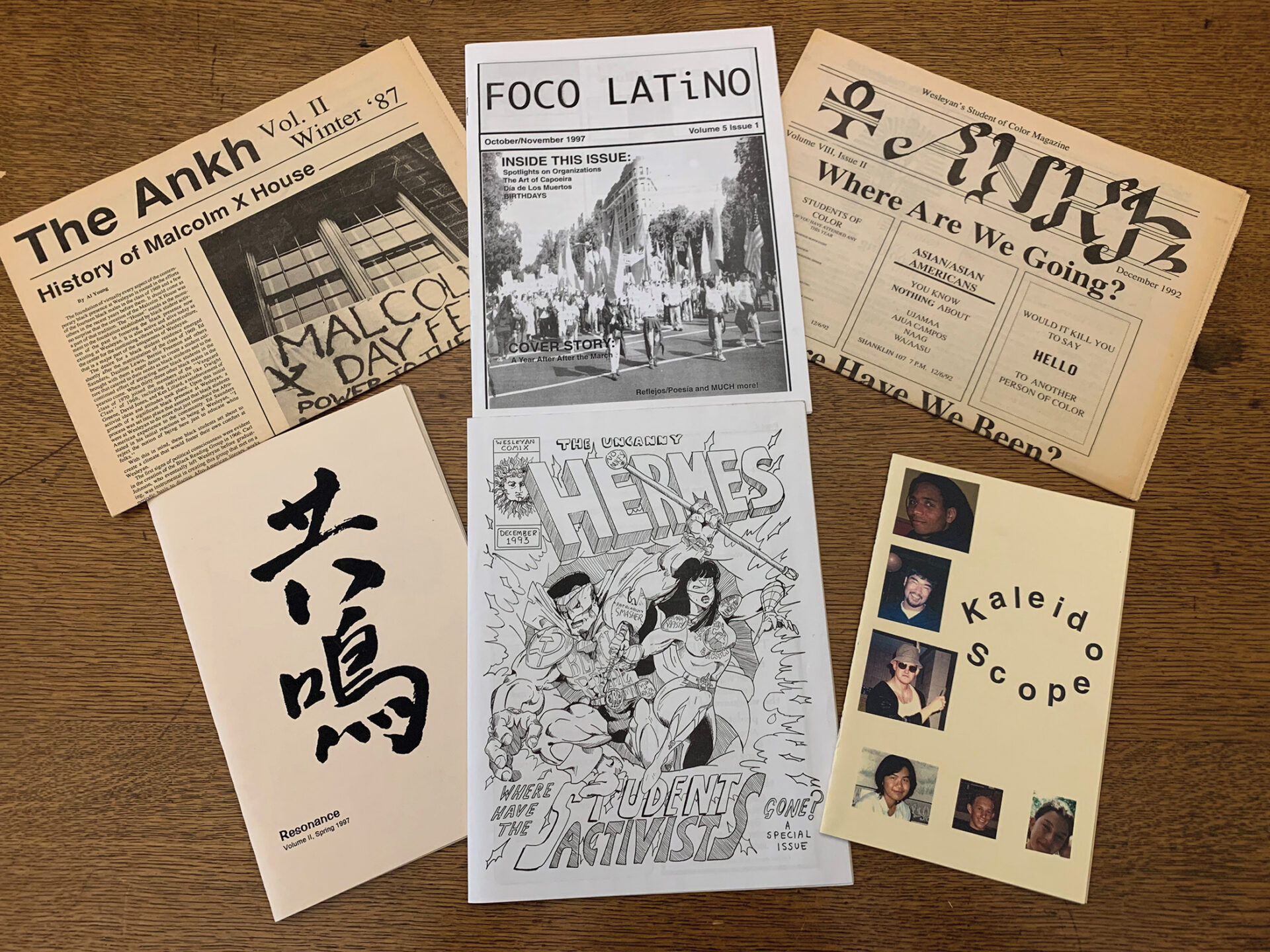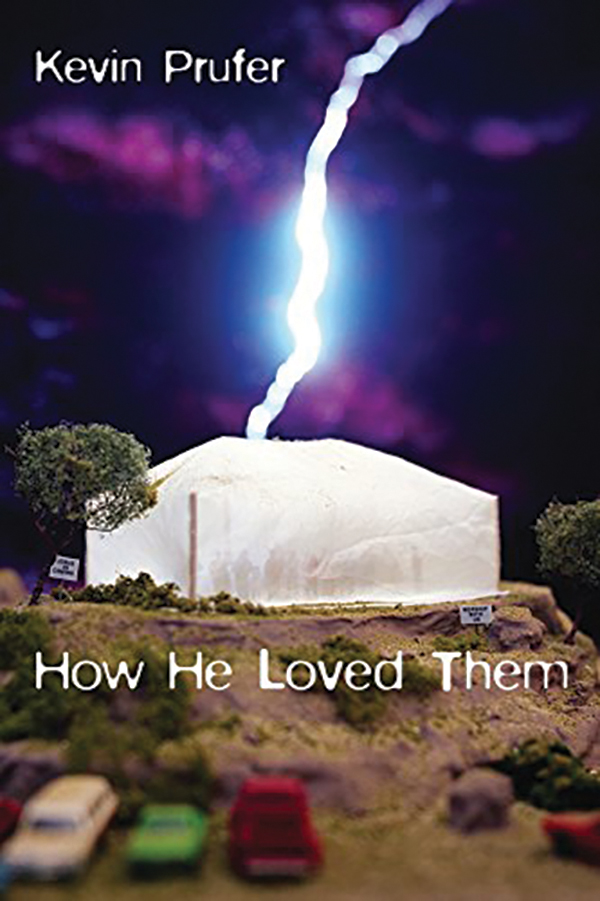Historical Row: Student Groups as Signs of the Times

Special Collections & Archives maintains a selection of various student group publications, including The Ankh, Foco Latino, and Dragonflies, which give students of color a place to tell their story. The Hermes is Wesleyan’s magazine of political, critical, and creative thought while Kaleidoscope contains autobiographical prose and poetry crafted by members of Wesleyan’s community. Photo courtesy Special Collections & Archives
Student groups are wonderful snapshots of the cultural zeitgeist at any particular moment. Often formed as part of different social trends or movements, these groups allow students to create relationships and build their knowledge and leadership on subjects about which they are especially passionate. Records from these student groups are some of the most-used in the University’s archives and provide a great perspective of Wesleyan’s history.
Early groups often focused on the University’s Methodist mission. The first, the Missionary Lyceum, dates back to October 22, 1834, just three years after Wesleyan’s founding, and focused on promoting a missionary zeal among its members by way of debates, addresses, collection of artifacts and literature from foreign missions, and the exchange of correspondence with various missionaries. This was very much in line with Wesleyan’s mission at the time. In 1848, the Lyceum took an innovative step by according honorary membership to a woman, Adelaide Fitzgerald of Middletown. You can see some of the Lyceum’s records online in our Digital Collections.
The Young Men’s Republican Club was another early group founded on June 21, 1856. Wesleyan’s first Republican political organization, it was designed to aid in the election of John C. Fremont to the presidency. The election of 1856 was the first in the country’s history to be contested by the newly formed Republican party. A significant number of Wesleyan students were vocal supporters in the early years, and much of their rhetoric centered on their opposition to slavery in Kansas.
In the early 20th century, fraternities and Greek letter societies became the primary student organizations on campus and were part of every aspect of campus life, including housing and dining clubs. Beginning in the 1960s, as Wesleyan’s student body diversified, the student groups followed suit. Unlike previous groups, which often came in the form of fraternities and subject areas, now a number of groups were formed based on the ethnicity, religious, and sexual orientation of students. Some of the groups formed during this time are still on campus today—Ujamaa; Ajua Campos; and the precursor to Wesleyan’s Jewish Community, the Wesleyan Jewish Student Organization. The first queer group on campus, the Gay Alliance organized in 1975, has grown and changed over the years to the numerous queer groups on campus today.
These groups were often started with the dual mission of creating a safe community for their members and educating others. Publications such as The Ankh, Dragonflies, Foco Latino, Hermes, and Kaleidoscope, gave students places to express themselves and tell their own stories. In the 1990s, the Queer Alliance had a group diary in which members would write to each other and share their experiences.
Groups also provide a place for students to stand up for their ideals and provide a united front to the administration when requesting and protesting (and sometimes demanding) changes. Our archives have examples of this work in the demands sent from the Black student population to the administration in February 1969 for the commemoration of Malcolm X Day. These included increased recruitment and the creation of what became the African American Institute and their own house on campus. We have similar documents from Ajua Campos making similar requests for the Latino population.
As campus has evolved, so have the student groups, expanding to include groups related to the important social ideals and international issues of the times. This includes, but is not limited to, student groups that fought for Wesleyan divestment from South Africa, the Nuclear Resistance Group that was active in the anti-nuclear movement, and the Wesleyan Clinic Escorts in the 1990s and early 2000s. Special Collections & Archives has collections and subject files on these and many other groups of these types.
Whatever the time period, the relationships students form in these groups go beyond the students’ time on campus and can serve as a starting point to help them make changes in the world. If you were a leader or member of a student group during your time at Wesleyan and you have any records or materials related to your group that you’d like to donate to the archives, please contact archivist Amanda Nelson at anelson01@wesleyan.edu.

